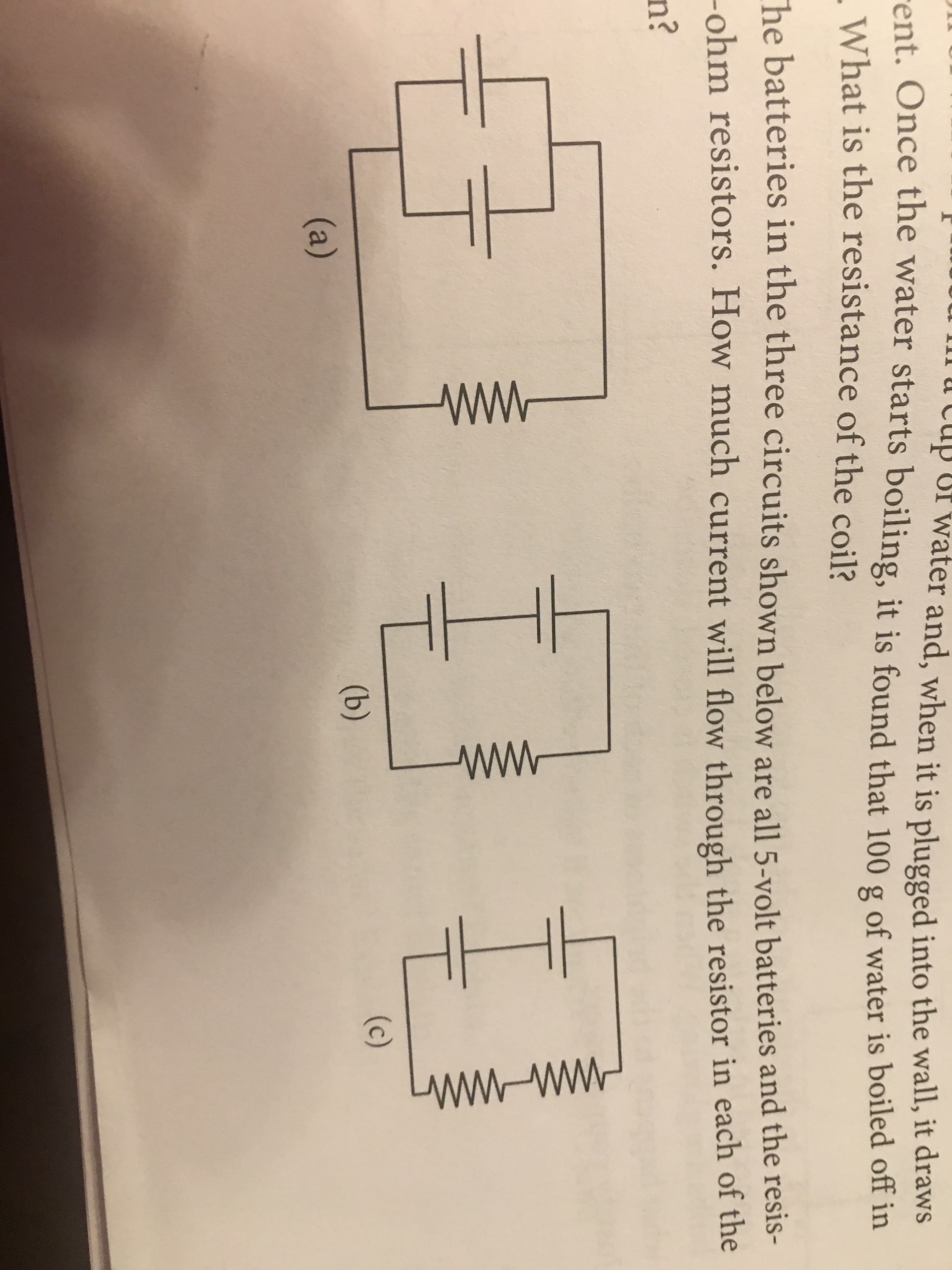Ilu LCuip ur water and, when it is plugged into the wall, it draws ent. Once the water starts boiling, it is found that 100 g of water is boiled off in What is the resistance of the coil? he batteries in the three circuits shown below are all 5-volt batteries and the resis- -ohm resistors. How much current will flow through the resistor in each of the
Ilu LCuip ur water and, when it is plugged into the wall, it draws ent. Once the water starts boiling, it is found that 100 g of water is boiled off in What is the resistance of the coil? he batteries in the three circuits shown below are all 5-volt batteries and the resis- -ohm resistors. How much current will flow through the resistor in each of the
Chapter7: Electricity
Section: Chapter Questions
Problem 26Q: (Indicates a review question, which means it requires only a basic understanding of the material to...
Related questions
Question
The batteries in the three circuits shown below are all 5-volt batteries and the resistors are 50 -ohm resistors. How much current will flow through the resistor in each of the cases shown?

Transcribed Image Text:Ilu LCuip ur water and, when it is plugged into the wall, it draws
ent. Once the water starts boiling, it is found that 100 g of water is boiled off in
What is the resistance of the coil?
he batteries in the three circuits shown below are all 5-volt batteries and the resis-
-ohm resistors. How much current will flow through the resistor in each of the
Expert Solution
This question has been solved!
Explore an expertly crafted, step-by-step solution for a thorough understanding of key concepts.
This is a popular solution!
Trending now
This is a popular solution!
Step by step
Solved in 4 steps with 3 images

Knowledge Booster
Learn more about
Need a deep-dive on the concept behind this application? Look no further. Learn more about this topic, physics and related others by exploring similar questions and additional content below.Recommended textbooks for you


Glencoe Physics: Principles and Problems, Student…
Physics
ISBN:
9780078807213
Author:
Paul W. Zitzewitz
Publisher:
Glencoe/McGraw-Hill



Glencoe Physics: Principles and Problems, Student…
Physics
ISBN:
9780078807213
Author:
Paul W. Zitzewitz
Publisher:
Glencoe/McGraw-Hill


College Physics
Physics
ISBN:
9781938168000
Author:
Paul Peter Urone, Roger Hinrichs
Publisher:
OpenStax College